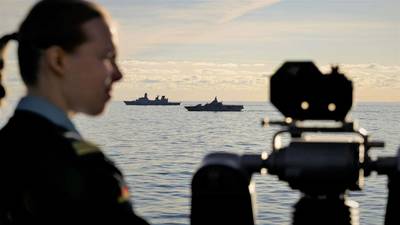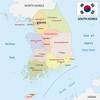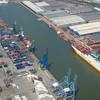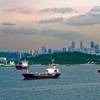Germany Opens Baltic Sea Naval HQ Amid Rising Tensions with Russia
Germany inaugurated on Monday a new multinational naval headquarters for the Baltic Sea capable of leading operations for NATO during a conflict, as the military alliance increases focus on the area amid rising tensions with Russia.
"Our message to our partners and to those who threaten our peace is simple: Germany stands firmly by its commitments," Defence Minister Boris Pistorius said according to a draft of his speech at a ceremony at the country's naval command in the coastal city of Rostock, on whose premises the headquarters is located.
"The headquarters will play a crucial role in the preparation of military situation reports and in responding to regional challenges, including the protection of NATO member states' interests against aggressive actions, particularly given the proximity of Russia."
The establishment of the facility highlights the crucial importance of the Baltic Sea for NATO after relations with Russia deteriorated following the Ukraine war, with Moscow's Baltic Fleet based near Kaliningrad.
Securing open sea routes through the Baltic Sea has become vital to the alliance since its eastern expansion after the end of the Cold War that saw Poland, Lithuania, Latvia, Estonia, and lately Finland and Sweden to the north, join NATO.
In the past, NATO's main role would have been to block the western entrance to the Baltic Sea to prevent the Soviet Union's Baltic Fleet from reaching the North Sea, where its warships could attack U.S. supply convoys crucial to Europe's defence.
Today, NATO must ensure the sea routes remain open since they might constitute the only supply line to the Baltic states should the narrow overland corridor linking them to Poland, and thus the rest of NATO territory in Europe, be blocked in any conflict with Russia.
Only two roads and one railroad line run through the 65 km (40 miles) wide corridor - the Suwalki Gap - that is squeezed between the heavily armed Russian exclave of Kaliningrad to the west and Belarus to the east.
Owning the biggest navy in the region, Germany has been concerned by Moscow's presence in the Baltic Sea for a while. After Russia's annexation of Crimea in 2014, Berlin forged an alliance of the western navies bordering the Baltic Sea.
The new headquarters, with around 120 German and up to 60 international staff in peacetime, will be led by a German admiral with a Polish deputy and a Swedish chief of staff.
Eleven nations have deployed personnel there - Denmark, Estonia, Finland, France, Britain, Italy, Latvia, Lithuania, the Netherlands, Poland and Sweden.
(Reuters - Reporting by Sabine Siebold, Editing by Miranda Murray and Toby Chopra)














